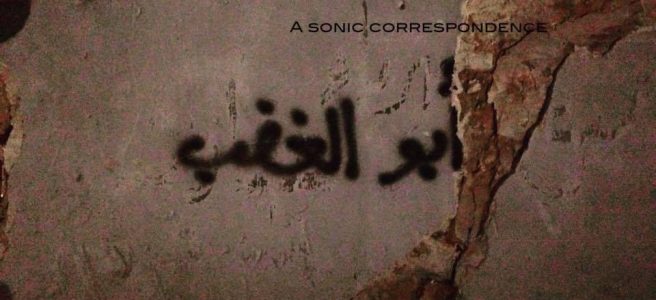My story and fascination with sound started in September 2015 when I took a class entitled Art and Politics with Mrs Monica Kriegler at Saint Joseph University of Beirut.
Monica describes the course as follows:
This module is an introduction to the interdisciplinary field of Art and Politics and is aimed at students interested in acquiring new knowledge of, and to critically think about, its relational nature (relational aesthetics) and the arts’ engagement (socially, politically, emotionally) with the field of the political. This module encourages students to imagine political (theoretical) foundations and ideas through the lens of contemporary art. By supporting integrated learning, the course inspires participation and critical thinking and relates acquired theoretical knowledge to practice, by developing group projects (consistent of both, a practical and theoretical part) as a final assessment task.
Fo that reason I immediately decided to team up with my colleague Laura Zein to create a project. We entitled our project: a sonic correspondence: parallelisms between ziad rahbani’s theatrical work and riad al solh protesters. A project created myself and Laura Zein as part of the course in Art and Politics, within the framework of The Master of Art Criticism and Curating, at Saint Joseph University. It was presented in 15 December 2015, at Mansion, Beirut.
In one of our 1st course sessions, we discussed the term experience in relation to art and politics and it’s interdisciplinary nature. This inspired us to develop a project that focuses on a ‘lived’ experience, bridging theory to a practice.
Nazl el Sourour by Ziad Rahbani was introduced to the Lebanese theatrical scene in 1974, followed six years later by his play Film Ameriki Taweel, in 1980. Both plays are re- garded as being representative of the critical socio-politi- cal landscape in Lebanon at the time.
Our sound-based project, A Sonic Correspondence, seeks to explore the striking similarities of the recent pro- test movements in Beirut in relation to Rahbani’s theatrical works, and demonstrate how they still resonate today. Al- though thirty- ve years apart, there are remarkable com- monalities, and as audience members and participants we are left wondering: has anything changed?
Making reference to the footage we have gathered, the socio-political situation has degraded, leading a mass of young people to protest the garbage crisis followed by demands “to bring down the political system”.
This sound experience invites the audience to consciously experience listening – an activity we, as citizens, may have unlearned? Overwhelmed by the large quantity of visual media surrounding the protests, do we give more impor- tance to what we see than to what we hear? We are left to ponder: is an image by nature soundless despite the fact that nevertheless it has a voice?
A further topic of the course relevant to this project was Judith Butler’s A Politics of the Street in light of the most recent protests in Beirut, analyzing Butler’s inquiry into who is the ‘we’ in the ‘people’ on the street, who speaks on behalf of who, who may be absent, and why?
Both protest and theatre are ‘lived’ experiences, yet differ- ent in its nature. At the heart of A Sonic Correspondence lies not only the idea to bring aspects of both art and pol- itics together – theatrical work and real time protest – but also to critically investigate how we listen what we hear, what we remember, and ultimately whether we can see through sound.

the music and political or patriotic song, political theater appears in some countries to express a challenge.You reminded me a sentence which I particularly like:
The musician reveals to us the intimate essence of the world, he is the interpreter of wisdom.The deepest, while speaking a language that reason does not understand.
Each language, spoken or written, each author, even every individual when he speaks, has its own « music ». Moreover, every time we speak, our speech provides essential information and is totally involved in the discourse, and our vocal inflections reveal our emotions in what we say.
The theater seems to me to be the place where one can both hear and see a text. Sight and hearing are solicited, as is our intellect. The text comes out of the book to become a sonorous subject while its enunciator comes to life by the presence of the actor.It is for this reason that we note today that music and theater contribute to a great extent in political protest…excuse my little english ! have a great evening.